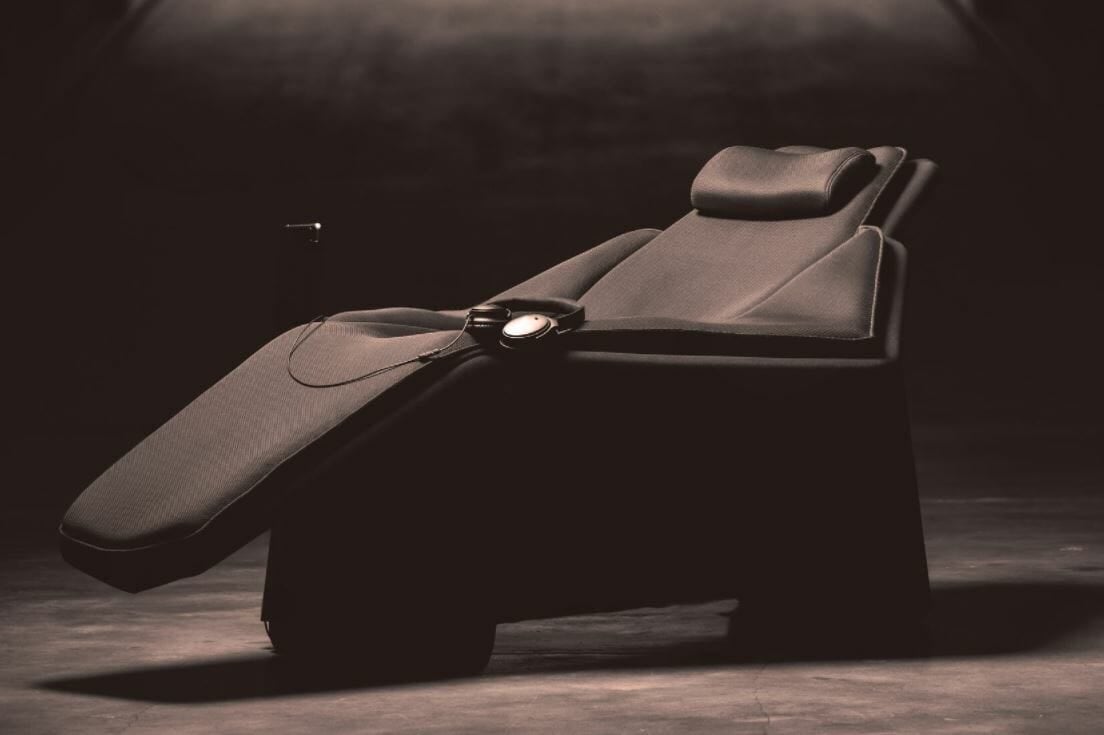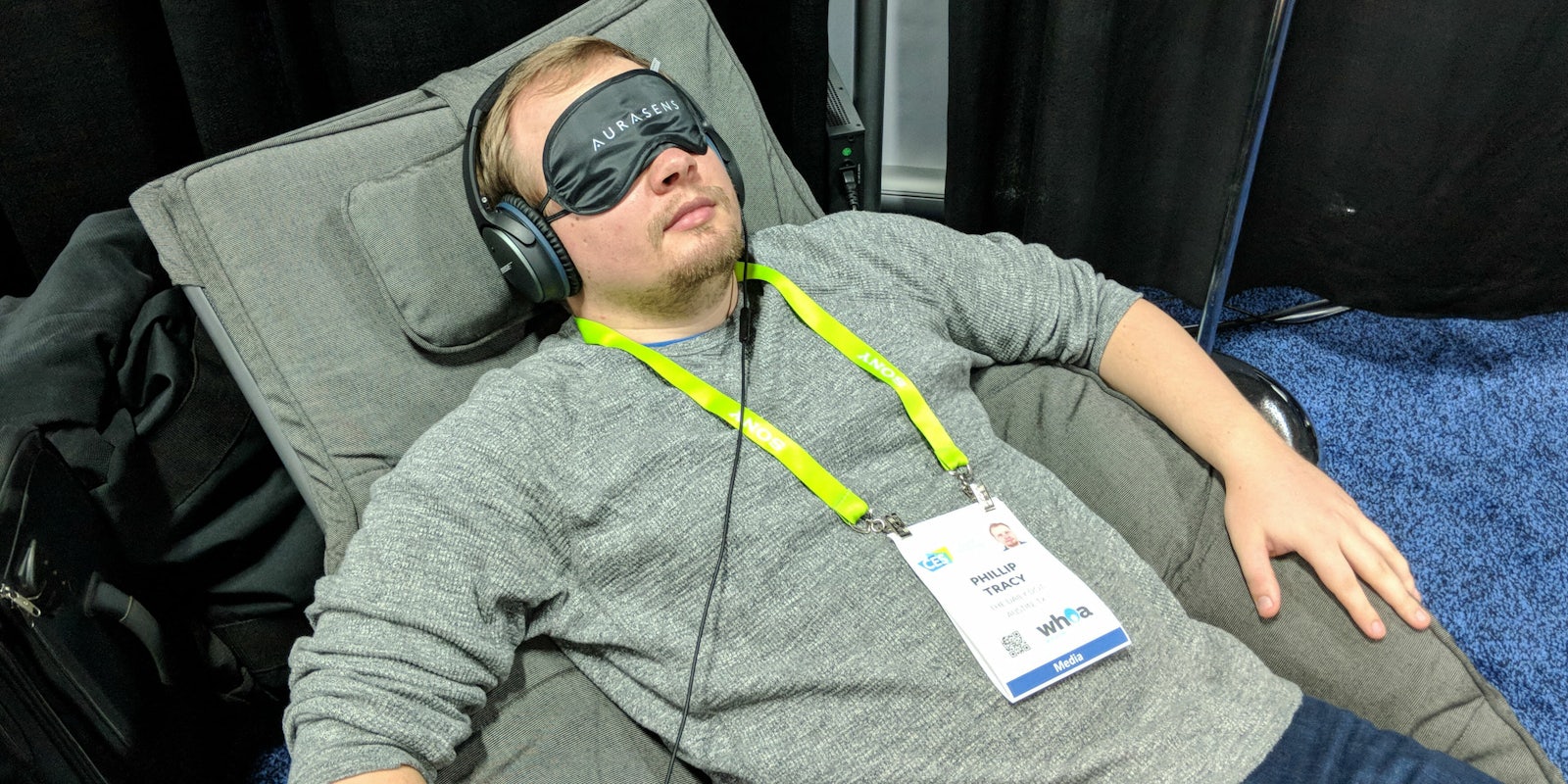It’s pitch black. The pair of Bose QC25 I’m wearing are blocking out the ambient noise around me. Suddenly, my legs start vibrating as if I were at a rock concert, sending a tingling sensation down my nerves and into the rest of my body. First my arms, then my back, then from the base of my neck to my head. It’s not painful. If anything, it’s relaxing. Pleasant even, not like those overaggressive massage chairs you find at malls (though it was probably mistaken for one by the hundreds of other journalists roaming the pre-CES showcase event).
I didn’t initially intend to test the device. It is, after all, a shaking lounge chair in a room filled with robots, wearables, and drones. That was before I caught a glimpse of the guy who tried it before me. His face was bright red, his body shaking, and every few seconds he’d burst out in excitement, “wow,” “holy.” It looked, well, inappropriate.
I had to give it a go.
The product, an elegant recliner filled with powerful little vibrating motors, is made by an otherwise-unknown French startup called Aurasens. It’s intended to relax people’s nerves and help them forget daily stresses, making CES attendees the perfect audience. It’s not the vibrating motors that make this chair special—it’s the programs that link the music to them. Aurasens says it has a curated soundtrack compatible with the chair but hopes to create an algorithm that works for any song.

As a self-proclaimed audio nerd, I went into the demo with a fair bit of skepticism. Could adding touch really enhance sound? It didn’t take long to get the answer. A few seconds after I laid down on the comfortable gray chair, music started to play. It was a strange remix of the sort of classical tunes you instantly fall asleep to and electric beats with enough thump to show off what the lounger is capable of. As the music played, the chair moved appropriately. When the soothing high-pitched tone of a violin rose and fell, soft vibrations, like raindrops, crawled up and down my body.
The location of the vibrations seemed to be determined by where in the soundstage the music came from and what instrument was played. The sound on the edges would initiate a tapping in my fingers while those in the foreground would send pulses into my back. Then came the bass. It drove aggressively into the back of my head. Any stronger might have been jarring, but it wasn’t. It felt stimulating.
As the vibrations and music worked in unison, a sort of symbiotic relationship began to form. The soothing classical tunes enhanced the relaxing pulses of the chair while the chair’s vibrations made the music come alive. At times, it felt like I was standing barefoot in a studio, feeling the vibration of string instruments and the thump of a bass drum echo in my chest.
The rep running the company’s booth told me there are plans to sell to individual consumers, not just businesses like clubs, airports, or hotels. The first batch of chairs is expected to be available in February. Pricing is unknown.
Still, I’m not convinced this is the future of home listening. Very few people I know like to completely tune out when listening to music—at least, not when they’re at home surrounded by other tech pleasures. Those who do are passionate about their expensive high-end gear and wouldn’t give it up for a chair. What I do know is that when the music stopped, my mind and body were desperate for another listen.


